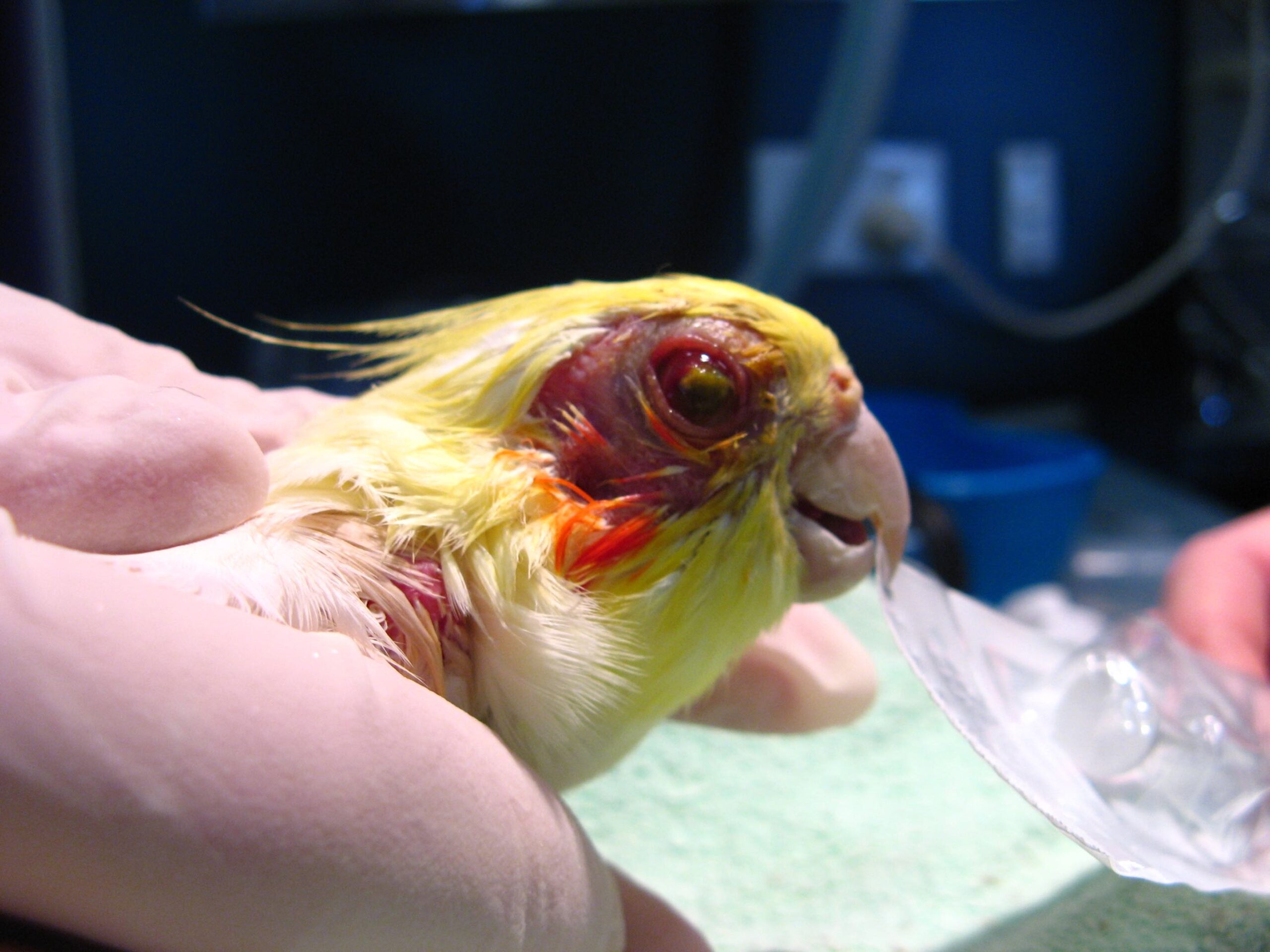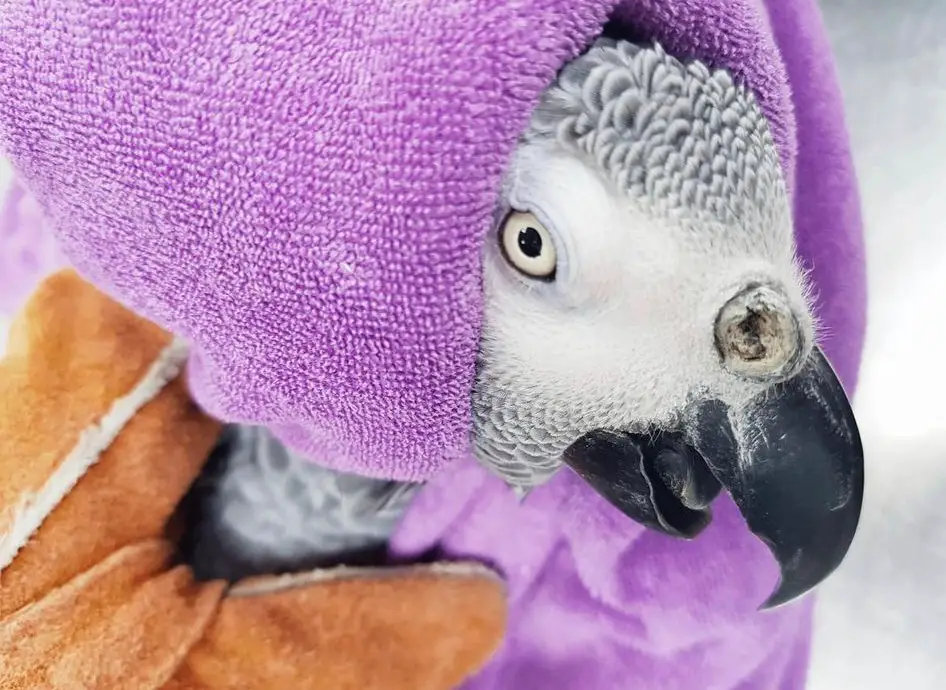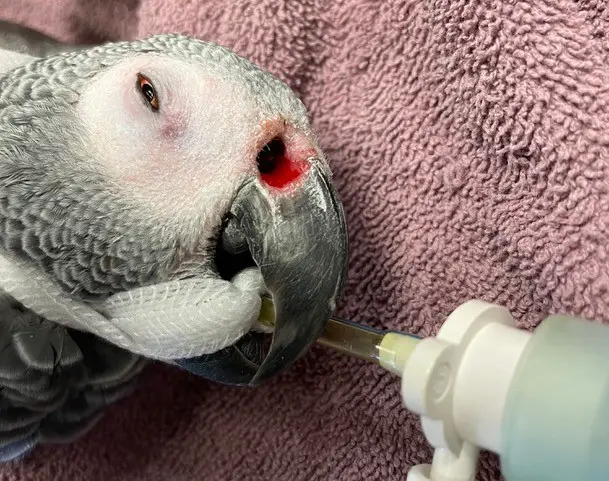Health & Care, Blogs
Parrot Disease Psittacosis: What You Need to Know
Psittacosis, also known as parrot fever, ornithosis, and avian chlamydiosis, is a rare but serious infection. It affects at least 465 bird species worldwide. This infection is highly contagious among birds and can also spread to humans. It causes flu-like symptoms and pneumonia.
The bacteria Chlamydia psittaci cause the disease. It spreads through infected bird droppings, saliva, mucus, feather dust, and eye/nasal discharge. People at risk include pet owners, bird handlers, veterinarians, and those in poultry processing2. Early treatment with antibiotics is key to managing the disease in both birds and humans.
Key Takeaways
- Psittacosis is a rare but serious bacterial infection found in birds, including parrots, cockatiels, and budgies.
- The disease can be transmitted to humans through contact with infected bird secretions, causing flu-like symptoms and pneumonia.
- Psittacosis is caused by the bacteria Chlamydia psittaci, which can infect a wide range of bird species.
- Early diagnosis and prompt antibiotic treatment are crucial for managing the disease in both birds and humans.
- Prevention measures, such as proper handling and sanitation practices, are essential to avoid the spread of psittacosis.
What is Psittacosis?
Psittacosis is a serious disease caused by the Chlamydia psittaci bacterium3. It mainly affects birds like parrots, macaws, and budgerigars. Other birds like turkeys and pigeons can also carry and spread the infection. The bacteria harm the bird’s digestive, respiratory, and other systems, making it highly contagious.
Understanding the Infectious Parrot Disease
Psittacosis, also known as avian chlamydiosis, can spread from animals to humans. It spreads quickly in bird groups, with the Chlamydia psittaci organism growing in the lungs and other areas within 24 hours. Cockatiels can carry the bacteria in their feces for over a year, making them common carriers.
The time it takes for birds to show symptoms of psittacosis can vary from 3 days to weeks. To detect the Chlamydia organism, a PCR test is used, which is accurate and sensitive. Birds with psittacosis need 45 days of doxycycline treatment to fight the infection.
Psittacosis is a big concern for bird owners and health officials because it can spread to humans, causing flu-like symptoms. If not treated, it can turn into pneumonia. Knowing about psittacosis helps keep birds and humans safe.
“Psittacosis is a highly contagious and potentially serious disease that can be transmitted from birds to humans. Proper precautions and vigilance are essential to protect the health of both pet owners and their feathered companions.”
| Psittacosis Outbreaks | Year | Location | Details |
|---|---|---|---|
| Customs officers outbreak | 1995 | Belgium | Reported by De Schrijver |
| Captive blue-fronted Amazon parrots outbreak | 2004 | Brazil | Reported by Raso Tde F, Godoy SN, Milanelo L, et al. |
| Bird park outbreak | 2008 | Japan | Reported by Matsui T, Nakashima K, Ohyama T, et al. |
| Probable outbreak linked to wild birds | 2005 | Not specified | Reported by Telfer BL, Moberley SA, Hort KP, et al. |
Psittacosis outbreaks have been found worldwide, affecting birds and humans. It’s important for health officials to keep an eye on it to stop its spread.
Affected Bird Species
Some pet birds can get psittacosis, but certain ones get it more often. Parrots, cockatiels, and budgies are at higher risk because they’re often kept as pets. They can carry the disease without showing signs of being sick. This means they can pass it on to other pets or people.
Lorikeets, canaries, and rosellas also get sick from the Chlamydia psittaci bacteria but show symptoms more easily. This makes them easier to spot as possible carriers, helping to catch the disease early.
The bacteria can spread fast in bird groups because it replicates and is shed quickly. Cockatiels, for example, can keep shedding the bacteria in their poop for over a year. This makes the disease hard to control.
To stop the spread of psittacosis, it’s important to keep things clean, quarantine sick birds, and isolate them. Knowing which birds are more at risk and how the disease spreads helps bird owners and vets keep these pets safe.
parrot disease psittacosis
Psittacosis, also known as parrot fever or avian chlamydiosis, is a rare but serious disease. It mainly affects birds like parrots, macaws, budgies, and cockatiels. The bacteria Chlamydia psittaci causes it and can spread from birds to humans. This leads to flu-like symptoms and, in severe cases, pneumonia.
In the United States, psittacosis is rare, with less than 10 human cases a year since 2010. But, it’s crucial for those who own birds, work in pet stores, are vets, or in the poultry industry to know the risks. They should also take steps to prevent the spread of this disease.
Austria saw 14 confirmed cases of psittacosis in 2023, up from a usual two cases a year. Denmark had 15 to 30 cases a year for five years, with 74% of 23 cases needing hospital care. Germany had 14 cases in 2023 and five by February 2024. Sweden saw seven cases in November 2023 and 19 in December, but fewer in January and February 2024. The Netherlands reported 21 cases by 29 February 2024.
Usually, psittacosis is a mild illness. With quick antibiotic treatment, serious complications like pneumonia are rare.
People at risk, like bird owners and pet store workers, should be careful. They should take steps to prevent this disease from spreading.

Transmission and Spread
Psittacosis, also known as “parrot fever,” spreads mainly through contact with infected birds. The bacteria Chlamydia psittaci can be found in droppings, saliva, and other parts of infected birds. People can get the disease by breathing in these particles, especially in places with bad air flow and lots of bird waste. Touching an infected bird or getting bitten can also spread the disease.
How Psittacosis is Contracted
Pet birds like budgies, lorikeets, and cockatiels often pass psittacosis to humans. In Australia, it’s rare for humans to get the disease from commercial poultry, but those who work with birds are at risk. People who work with birds, such as owners, breeders, pet shop workers, vets, and lab workers, are more likely to get psittacosis.
Sometimes, psittacosis can spread from one person to another through the air. Insects like lice might also help spread the bacteria among birds. Keeping things clean and isolating sick birds is key to stopping the disease from spreading further.
“Psittacosis has been documented in 467 different species from 30 orders of birds.”
Psittacosis can take 5 days to 4 weeks to show symptoms, with 10 days being the most common. If birds get sick, they might get better with antibiotics and cleaning their cages.
Symptoms in Humans
Psittacosis in humans often shows symptoms like the flu. People may feel fever, headache, and muscle aches. They might also have a rash, lose their appetite, or feel tired. These symptoms usually start 4 to 14 days after touching infected birds or their droppings.
In serious cases, psittacosis can cause severe pneumonia, which can be deadly. Doctors usually diagnose it by checking for antibodies in blood samples. The disease is so serious that it must be reported quickly to health officials.
Tetracycline antibiotics are the go-to treatment for psittacosis since there’s no vaccine. The disease can hit many people, like bird owners and workers in pet shops or poultry plants. But, it’s rare for it to spread from person to person.
Psittacosis is a serious disease that can be severe and might need hospital care. Symptoms include fever, headaches, and pneumonia. It can also cause other serious health issues.
To diagnose psittacosis, doctors use blood tests and DNA tests like next-generation sequencing (NGS). These tests are done in special labs. Doctors treat it with antibiotics like doxycycline or azithromycin. Kids might get different treatments based on their age.
To avoid getting psittacosis, stay away from pet fluids and wash your hands well. Wear protective gear and clean pet areas often. Remember, psittacosis doesn’t spread between people, but infected birds can still carry it.
Symptoms in Birds
Birds with psittacosis, caused by Chlamydia psittaci, may show many worrying signs. These include eye and nose discharge, swollen eyes, and droppings that are yellow or green. They might also be depressed, quiet, eat less, lose weight, feel weak, have ruffled feathers, and breathe hard. In bad cases, they could have a fever, diarrhea, and pee a lot.
But, not all birds with psittacosis will look sick. Some birds can carry the disease without showing any signs. These birds can still spread the disease to other birds or people. The bird’s type, health, and stress level can affect how sick it gets and if it shows symptoms.
Psittacosis is common in some parrots like cockatiels, budgerigars, amazons, macaws, and lorikeets. These birds might eat less, lose weight, feel tired, have diarrhea, runny noses or eyes, look fluffed, and breathe hard.
Even birds that don’t seem sick can still spread the disease. This is a big risk in places like pet stores and breeding centers.
“Psittacosis can be a serious and sometimes fatal disease in birds, and it’s important for bird owners and caretakers to be aware of the potential signs and symptoms.”
Diagnosis and Treatment
Diagnosing psittacosis, a disease found in parrots, requires both lab tests and doctor checks. Vets use blood tests to check for antibodies and take samples from the bird’s mouth, eyes, and vent to find the Chlamydia psittaci bacteria. X-rays can also spot pneumonia or other lung problems.
Laboratory Tests and Antibiotics
When psittacosis is suspected, doxycycline is the go-to antibiotic. It can be given through the mouth, by injection, or mixed into the bird’s food or water. Birds need to take this medicine for at least 45 days to clear the infection and stop spreading it. For very sick birds, vets may also give fluids and extra heat to help them get better.
Finding psittacosis can be hard, as only a few cases out of many were confirmed in the U.S. from 2006 to 2012. But, vets have many tools to spot and treat this serious bird disease.
“Psittacosis outbreaks have been linked to pet shops, poultry farms, and veterinary facilities.”
By being careful and using the right tests for psittacosis, vets can keep birds and their owners safe.
Prevention and Control
To stop psittacosis from spreading, it’s key to keep things clean and safe when taking care of pet birds. This means cleaning bird cages often, feeding them well, and keeping their living area calm. Also, keep any new birds in isolation for 30 days before they meet the others.
People who own birds, work in pet stores, see birds as vets, or handle poultry should be careful. They should wear masks, gowns, and gloves to protect themselves. If a bird might have psittacosis, keep it away from others and get vet advice to stop the disease from spreading.
- Regularly clean and disinfect bird cages
- Provide a healthy diet and low-stress environment for birds
- Quarantine new birds for at least 30 days before introducing them to the flock
- Wear protective gear when handling birds or cleaning their habitats
- Isolate and treat any birds suspected of having psittacosis
By doing these things, people who care for birds, bird experts, and those in the poultry industry can control and prevent psittacosis.
“Proper biosecurity measures are crucial in limiting the transmission of psittacosis among birds and from birds to humans.” – Dr. Jane Doe, Veterinary Epidemiologist
Rare but Serious Infection
Psittacosis is a rare disease in the U.S., with less than 10 cases a year since 2010. It’s a serious infection that can be life-threatening and needs quick action. It can cause severe pneumonia and harm different organs, especially in older people or those with health issues.
When birds get Chlamydia psittaci, over 50% can die, depending on the bird type and when they get the disease. It’s important to take precautions, find it early, and use the right antibiotics to stop it from spreading.
Most people get psittacosis from birds like parrots, cockatiels, and parakeets. The time it takes to show symptoms is five to 15 days. Both men and women can get it, but it’s a rare disease. This lack of awareness among the public and doctors makes it harder to handle.

An African grey parrot with a large rhinolith. Image used with permission from Leigh P. (owner of the bird)
People who work with infected birds or are around them are most at risk. The main treatment is antibiotics like tetracycline and doxycycline. Psittacosis can affect many organs, making it hard to tell apart from other diseases like Brucellosis and Tularemia.
| Statistic | Value |
|---|---|
| Reported cases of psittacosis per year in the U.S. | 50 to 200 |
| Incidence of psittacosis in the U.S. (1999-2006) | 0.01 per 100,000 population |
| Psittacosis as causative agent in hospitalized pneumonia cases | Less than 5% |
| Psittacosis as causative agent in community-acquired pneumonia cases worldwide | 1.03% |
| Psittacosis as causative agent in severe community-acquired pneumonia cases in China (2022) | 6.8% |
In conclusion, psittacosis is rare but serious. It can have severe effects if not handled right. We need more awareness, early spotting, and the right treatment to reduce its risks and effects.
Historical Significance
The 1929 Baltimore Parrot Fever Incident
The story of psittacosis, or “parrot fever,” is tied to a big outbreak in Baltimore, Maryland, in 1929. That year, Simon S. Martin bought a parrot as a Christmas gift for his wife. Sadly, the parrot got sick and died soon after. Then, Martin’s wife and two relatives who helped with the parrot also got sick.
The doctor treating them knew it was “parrot fever.” He told the U.S. Public Health Service about it. This led to a lot of fear and news coverage, causing more cases to be reported. Thanks to this, scientists found the bacteria causing the disease, Chlamydia psittaci, and made antibiotics for it.
The 1929-30 psittacosis pandemic had about 750 – 800 cases worldwide, causing around one hundred deaths.
The history of psittacosis and the 1929 parrot fever outbreak in Baltimore changed how we handle this disease. It made people more aware and led to better ways to diagnose and treat it, helping public health.
Conclusion
Psittacosis, also known as “parrot fever,” is a rare but serious illness. It mainly affects birds like parrots, macaws, budgies, and cockatiels. This disease comes from the Chlamydia psittaci bacterium and can spread from birds to humans. It causes symptoms like the flu and can lead to severe pneumonia.
In the U.S., psittacosis is not common, with less than 10 cases reported each year. But, it’s important for those who own birds, work with pets, or are in the poultry industry to know the risks. They should take steps to protect themselves and their birds. Getting a diagnosis and starting antibiotics quickly is key to treating this disease in both birds and people.
This parrot disease can be very serious and can spread from birds to humans. Being aware and taking steps to prevent it is crucial. By staying informed and acting early, we can keep our birds and ourselves safe.

